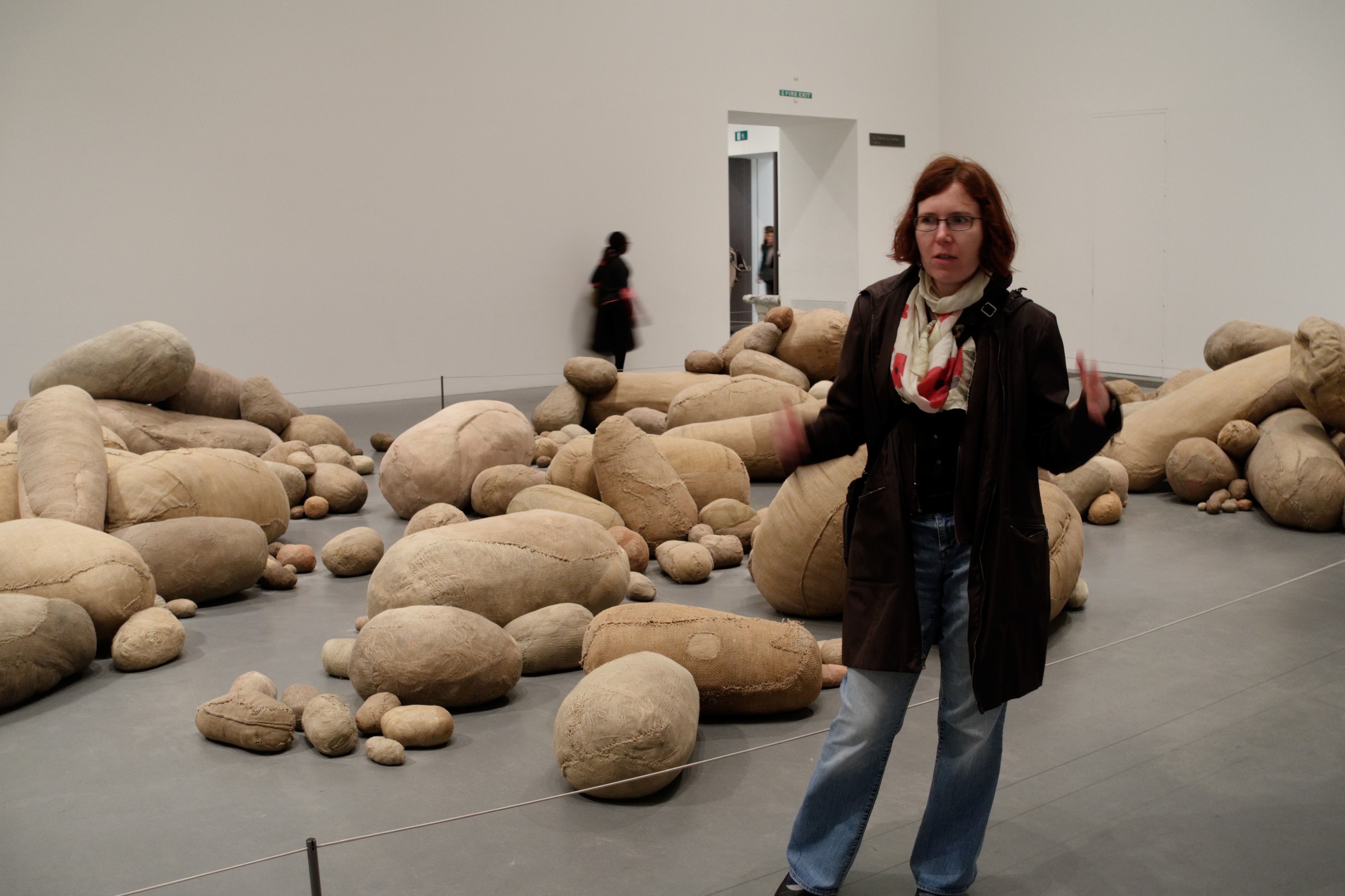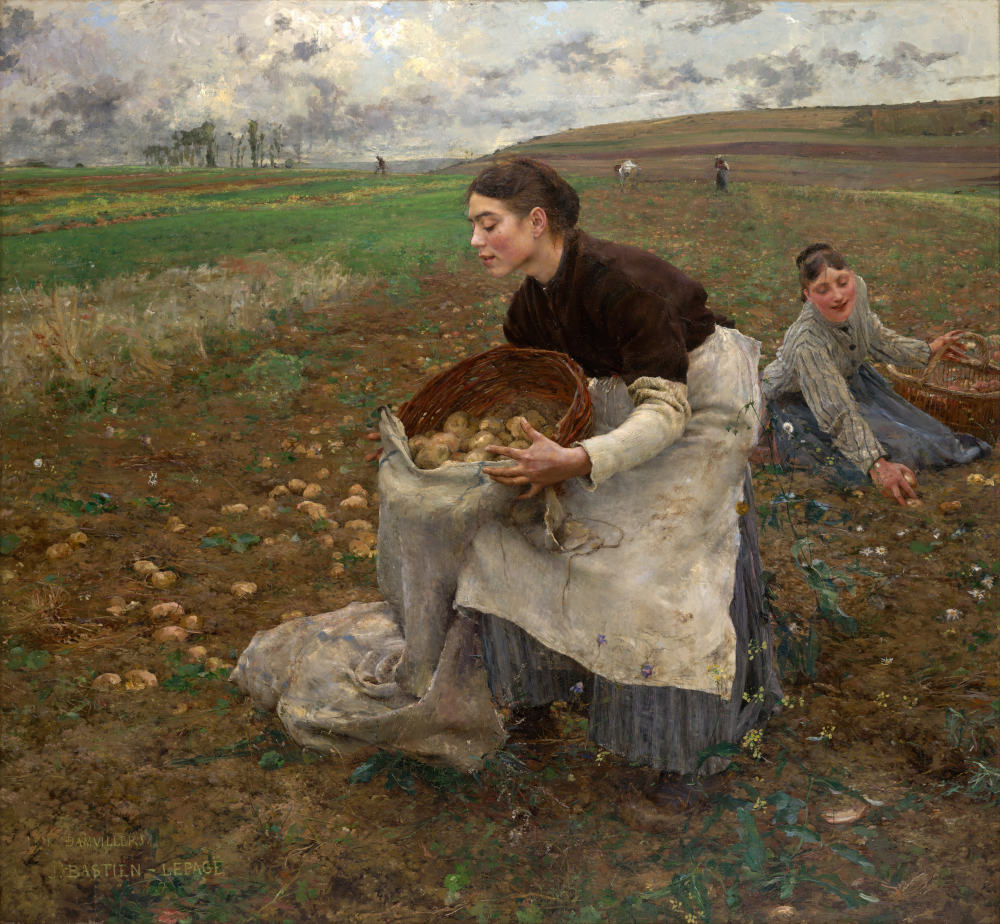Translating Big Potatoes: A Kind of Review of Embryology by Magdalena Abakanowicz
by
 "Ha! Definitely potatoes!" Author gesticulating in front of Embryology by Magdalena Abakanowicz at Tate Modern
"Ha! Definitely potatoes!" Author gesticulating in front of Embryology by Magdalena Abakanowicz at Tate Modern
The uneven, bulbous shapes reminded me of a recurring hypnagogic hallucination from my childhood, and so of course, I was immediately drawn to them, while simultaneously repulsed. Exactly like that nightmare hallucination. I walked around them, rather wishing, as I often do with sculpture, that I could get closer, touch it, or at least walk among the piles of brown - what exactly?
At first I thought of a disturbed ants nest, with worker ants carrying eggs away. But eggs would all be the same size. Then I thought of potatoes.
As I wandered around my companion read the explanatory plaque out loud:
Magdalena Abakanowicz, Embryology 1978–80.
These cocoon-like objects reflect Abakanowicz’s interest in biological systems, organic matter and regeneration, topics she discussed with scientists in her native Poland. In response to a commission to represent Poland at the Venice Biennale in 1979, she made hundreds of soft sculptures of varying shapes and sizes, ‘rounded like bellies, or elongated like mummies,’ as she described them. Abakanowicz collected old mattresses, clothing and sacks to create this ‘invented anatomy’ of forms and installed eight hundred in Venice under the title Embryology.
Ha! Definitely potatoes then! Or certainly influenced by potatoes. I could see immediately how the language of high art had been deployed to obscure a humble and low-prestige inspiration. Listen, I could be wrong, of course, I could always be wrong, but I am almost certain I am not wrong.
Let me tell you about the potato harvest.
When I was a child in the Polish People’s Republic (Polska Rzeczpospolita Ludowa), or as we more often say, Communist Poland, schoolchildren in the upper grades participated in the potato harvest, or wykopki. I was too young to participate myself, but I heard all about it and I was very jealous. First of all, you got to leave school for the day and be outdoors all day. As I understand it, the farm machines did most of the work, and people walked behind them to pick up the irregular-sized potatoes that the machines missed. (And at the end of the day there were bonfires and fire roasted potatoes eaten hot with just salt in the cold autumn air. How I wished they would have taken me to wykopki.)
And what do you suppose that might have looked like, uneven potatoes scattered behind the machine on the uneven ground?
 October, Jules Bastien-Lepage (1878, oil on canvas), Public domain, via Wikimedia Commons
October, Jules Bastien-Lepage (1878, oil on canvas), Public domain, via Wikimedia Commons
Remarkably like the scattered objects in Embryology, I think.
I cannot prove it, but it’s very likely that Abakanowicz participated in the potato harvest as a school child, even if she never did as an adult. It’s also very likely that she saw such fields of potatoes being harvested (as I did), because potatoes are and have been a staple crop in Poland.
What’s more, her choice of materials, the burlap, is evocative of the burlap sacks potatoes were (and perhaps are?) stored in. It’s possible she used actual potato sacks to make her art. Potatoes are all over the work.
The artist herself might have rejected the potato inspiration of the form, and the potato sackcloth origin of the material, rejecting all the Communist era romance of the potato harvest. Or the description of her work as given may be deliberately high-artish, because while a potato harvest is a fit subject for Socialist Realism (which she found stifling and rejected), it isn’t high-concept enough for Art. Or is this my own class ressentiment showing?
Embryology is on display at the Tate Modern, in London, as a part of the permanent collection. Admission is free.
